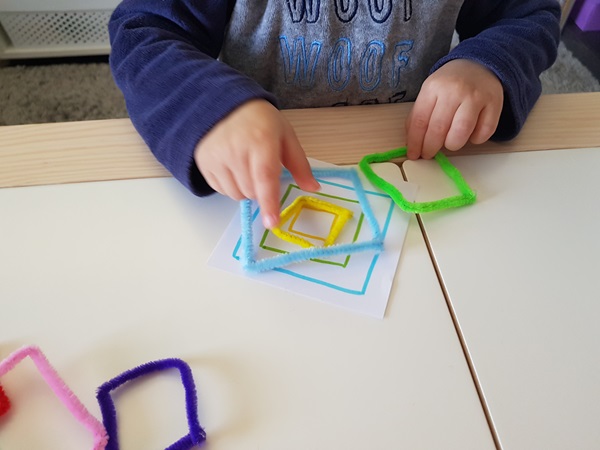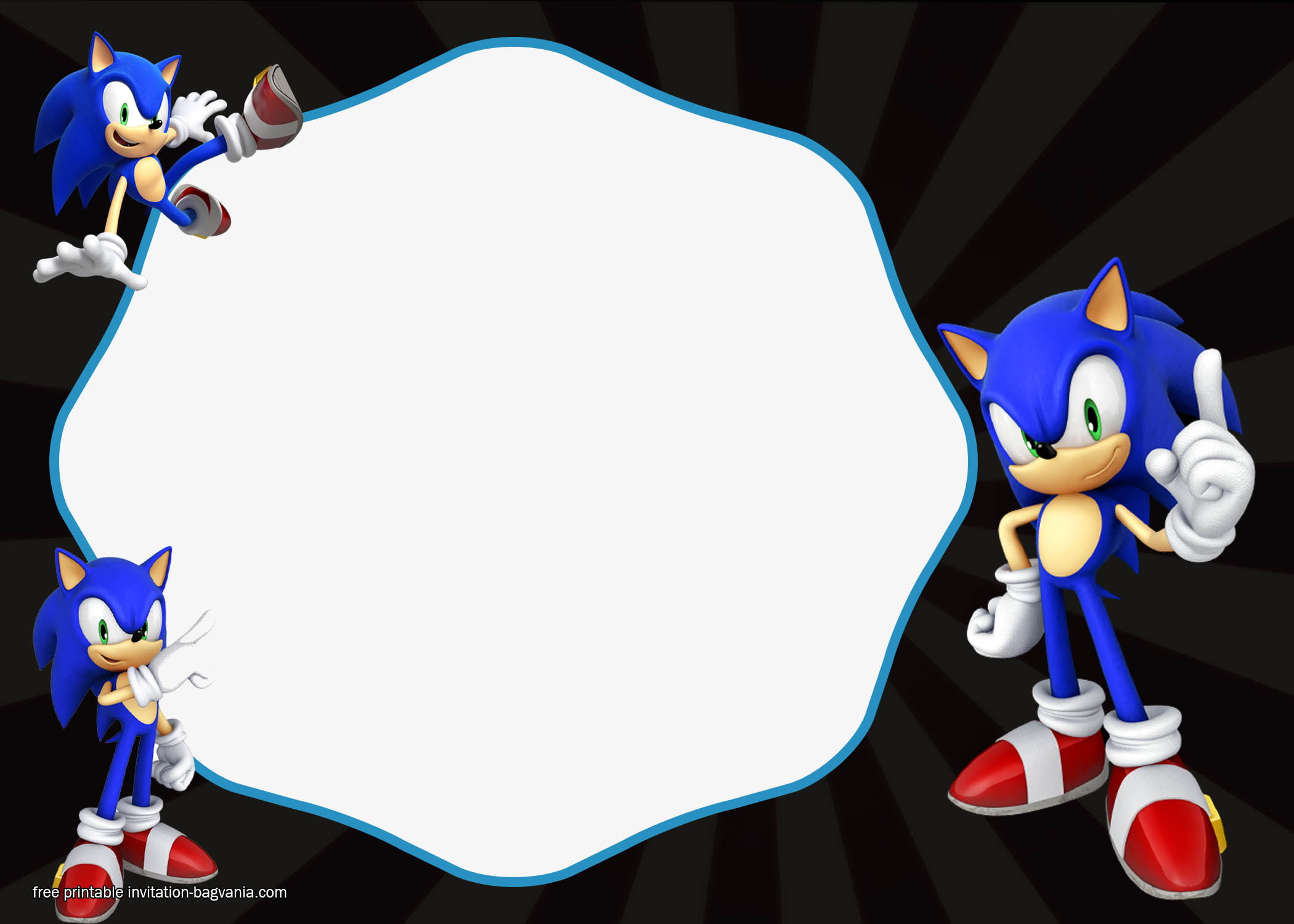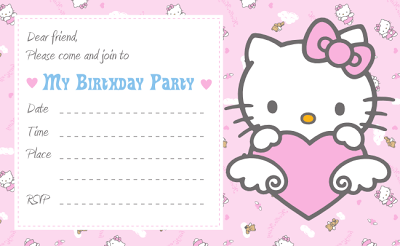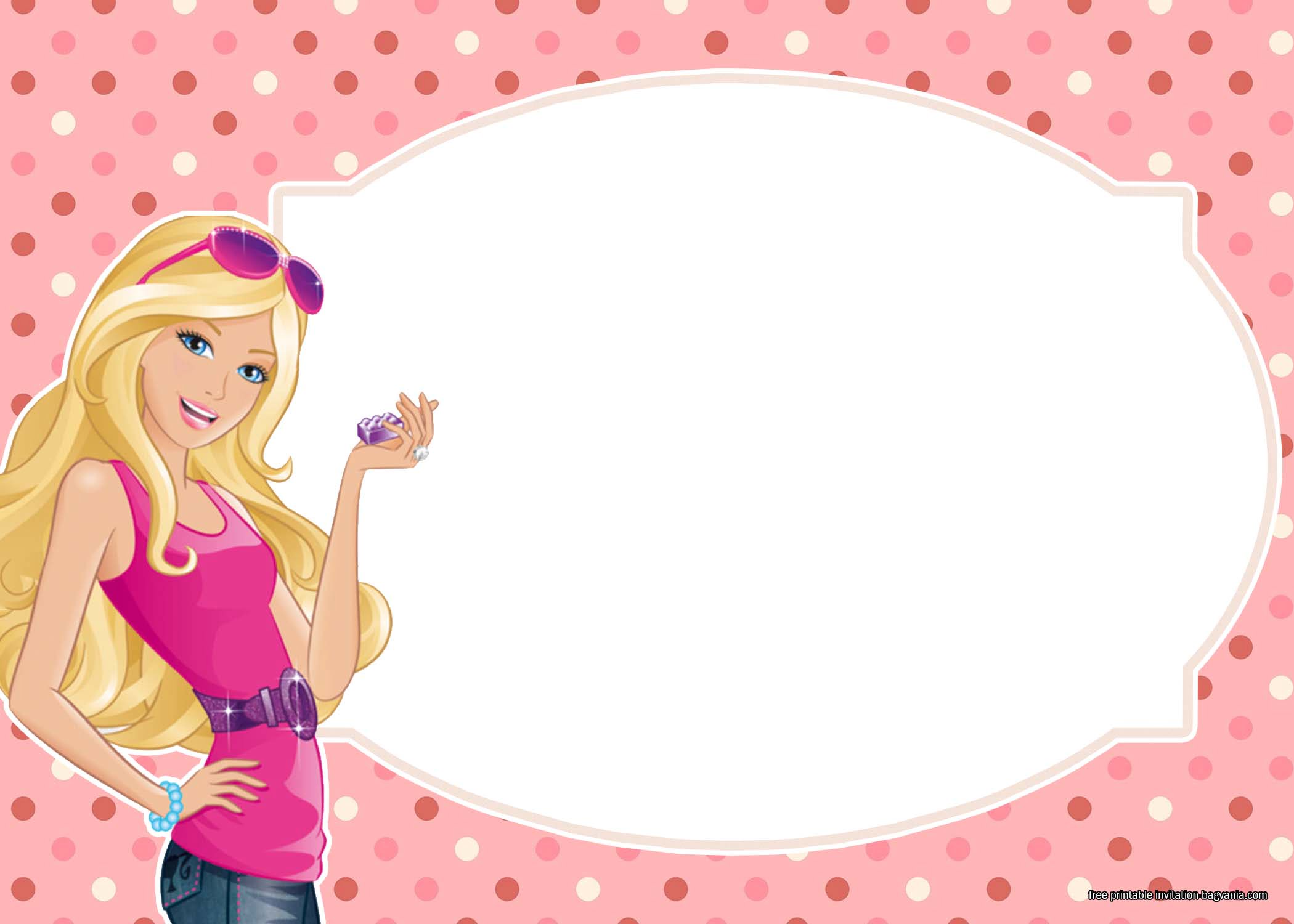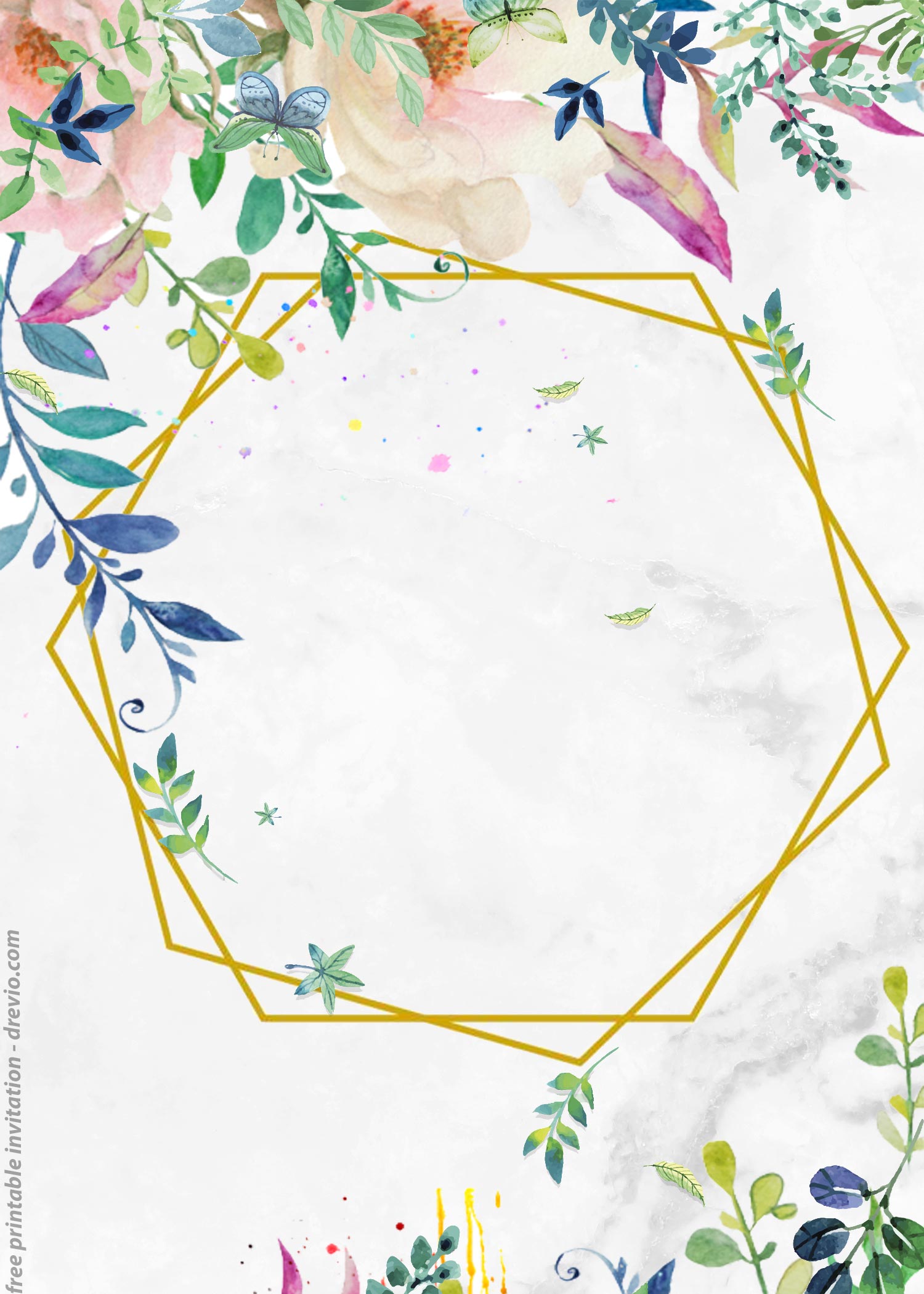Sort by shape is a timeless and engaging activity that combines fun with foundational learning for young children. By categorizing objects based on their shapes, kids develop critical skills like visual discrimination, fine motor coordination, and early problem-solving abilities. This activity isn’t just educational—it’s also a creative way for parents and caregivers to bond with their little ones. Whether using household items, toys, or craft materials, sorting by shape offers endless opportunities to adapt the challenge to suit any age group.
In this article, you will learn about the benefits of this seemingly simple activity. We also have some websites that you can check out to get your sort by shape resources and start doing this activity with your little ones. If you are planning to invite family and friends to do this activity together, we also provide some invitation templates with fun designs! Ready to dive into the fun and share ideas with other parents? Let’s explore how to make this activity a delightful experience for all!
Benefits of Sort by Shape
1. Develops Visual Discrimination Skills
Sorting by shape helps children sharpen their visual discrimination abilities—the ability to notice and differentiate between shapes. This skill is critical for tasks like recognizing letters, numbers, and symbols as they grow. By repeatedly identifying and grouping shapes, children become better at observing small details, an essential step in learning to read and write.
2. Builds Fine Motor Skills
Handling and sorting objects requires kids to use their fingers and hands, which strengthens their fine motor coordination. Picking up, moving, and placing items into groups exercises the small muscles needed for activities like writing, drawing, and cutting. This hands-on activity provides an engaging way to prepare children for these essential tasks.
3. Encourages Problem-Solving Abilities
Sorting by shape involves critical thinking as children figure out how to categorize items correctly. They must analyze the features of each shape and decide where it belongs, which fosters problem-solving skills. This process also builds confidence as they successfully complete the sorting challenge, encouraging them to tackle more complex tasks in the future.
4. Introduces Early Math Concepts
Sorting is a fundamental math skill that lays the groundwork for understanding patterns, sequences, and classifications. By grouping shapes, children learn to recognize similarities and differences, which are key concepts in geometry and other areas of mathematics. This playful introduction to math concepts can spark a lifelong interest in numbers and logic.
5. Promotes Focus and Attention to Detail
Sorting activities require concentration and careful observation, helping children develop focus and attention to detail. As they examine shapes and sort them into groups, they practice staying engaged with a task, a skill that’s important for academic success and everyday life.
6. Boosts Language and Communication Skills
When children sort shapes, they often describe what they see or ask questions about the activity. This encourages them to use shape-related vocabulary like “circle,” “square,” or “triangle,” enriching their language skills. Parents and caregivers can enhance this by discussing the shapes and encouraging kids to explain their thought processes.
7. Encourages Independence and Confidence
As children become familiar with sorting by shape, they gain the confidence to complete the activity independently. This independence fosters a sense of achievement and self-reliance, motivating them to explore and learn through other hands-on activities.
Sort by Shape Worksheets for Young Children
Sort by shape is most suitable for children aged 2 to 5 years. At this stage, toddlers and preschoolers are naturally curious and ready to explore basic concepts like shapes, colors, and sizes. It’s an ideal way to build foundational skills while keeping the activity playful and engaging.
Keeping in mind your child’s age and developmental stage, this activity should be adjusted to avoid frustration from doing something too difficult or boredom from doing something too simple. So here are a few great worksheets to start off with:
1. Simple Shapes
This is where you can start your sort by shape journey, this kind of worksheets with simple, brightly colored shapes are really great for toddlers (ages 2 to 3). This one is from Live Worksheets, where your child can actually do this activity online. Printing this worksheet is also possible, but remember to help them buy cutting the shapes first, and then they can get on with the sorting.

Another great worksheet for your toddlers to try would be this worksheet from Semesta Ibu. This worksheet uses simple shapes, such as squares, triangles and circles, but with different patterns. This will require your child to pay close attention to the shape of each object and sort them accordingly.
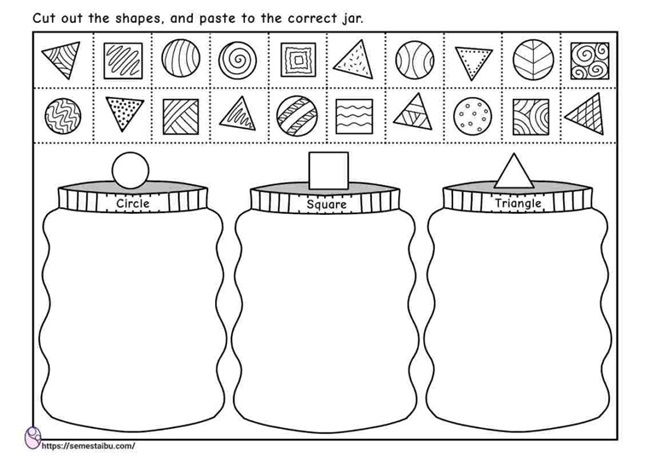
2. Same Object of Different Shapes
You can always go beyond the basic shapes, take this one great worksheet from Fun Learning Hub. This fall-themed worksheet provides different shapes and colors of fall leaves for the children to group into different categories. If you have a preschooler, this worksheet might just be the right one for them as it will train their visual perception and attention.
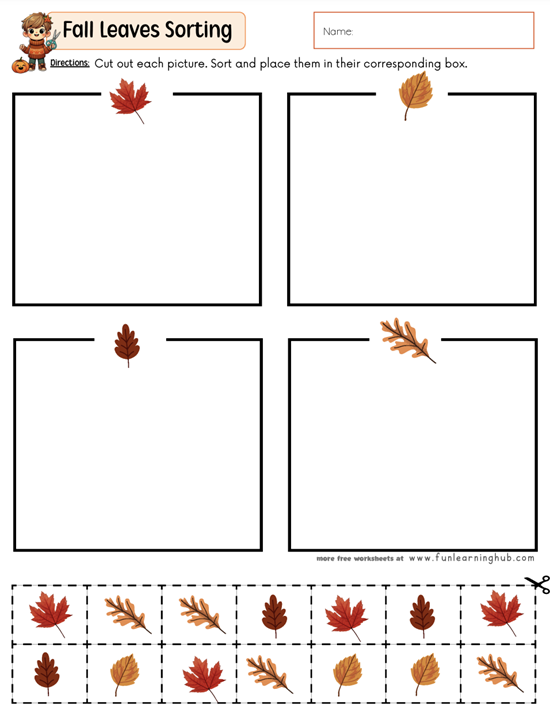
Doing sort by shape worksheet is also a great opportunity for them to practice cut and paste. Remember to only let them to use child-safe scissors and always supervise. This is such a great activity for them as the act of looking and sorting help their cognitive development, at the same time cutting and pasting train their fine motor skills.
3. Everyday Objects
Some worksheets offer everyday objects for your children to sort. This is a really great opportunity for them to learn and recognize different everyday objects and to recognize their shapes, which are sometimes not very obvious. A great worksheet to start off with would be this one from Top Teacher.

4. Tailoring for Younger or Older Kids
If your children are younger or older than the age range of 2 to 5 years, you can still do this activity, but it may be necessary to make a few adjustments. Here are some adjustments that you can try to make:
For younger toddlers, simplify the activity:
- Use large, brightly colored shapes that are easy to grasp.
- Start with just two or three shapes (e.g., circles and squares) to avoid overwhelming them.
- Encourage exploration rather than perfection; let them touch, feel, and even stack the shapes.
To make it more sensory-focused, use soft or textured shapes like foam or fabric to enhance their tactile experience.
For older children, increase the challenge:
- Introduce more complex shapes (hexagons, pentagons, or irregular ones).
- Combine sorting by shape with sorting by size or color for a multi-step task.
- Add a time limit or make it a game where they compete to sort shapes the fastest.
Older kids can also engage in creative extensions, such as drawing and cutting out their own shapes to sort or using the sorted shapes to create patterns and designs. Tailoring the activity in this way keeps it engaging and developmentally appropriate across a range of ages.
Invite Others to Join the Fun
Sorting by shape can be turned into an exciting group activity for playdates, classrooms, or family gatherings. Children love working together, and the activity becomes more enjoyable when combined with teamwork or friendly competition. For example:
- Team Sorting: Divide kids into teams, and give each group a pile of mixed shapes to sort. The first team to correctly sort all their shapes wins.
- Shape Hunt: Hide shapes around the room and have the children find and sort them, turning the activity into a scavenger hunt.
- Creative Sorting Station: Set up different sorting stations where kids can sort shapes by size, color, or texture, providing variety and keeping the group engaged.
These interactive approaches foster collaboration and add a layer of excitement to a simple task. If you’re organizing this as a playdate or group event, make it sound fun and accessible:
- Personal Invitations: Send out colorful, shape-themed invitations that include details about the activity and encourage participation. For example: “Join us for a Shape-Sorting Adventure!”
- Social Media Post: Share a post in your parent or community groups with a catchy caption like: “Looking for a fun and educational playdate idea? Let’s explore the world of shapes together! Snacks and laughs guaranteed!”
We have some really fun invitation templates that you can use, for personal invitations or social media posts. If you are looking for something along the safari or jungle theme with some cute animals, you can try 7+ Safari Animals For Boys Birthday Invitation Templates. All you have to do is download and add the details to your playdate. Make sure to highlight that this activity is hands-on, enjoyable, and adaptable to different age groups, so everyone feels welcome to join!
Sort by shape is a simple yet powerful activity that benefits children in so many ways, from building fine motor skills to encouraging problem-solving and early math concepts. Whether you’re sorting with a toddler or a school-age child, it’s an activity that grows with them, offering new challenges and learning opportunities at every stage. The best part is that it’s fun for everyone involved—parents, caregivers, and kids alike!
So, gather some shapes and invite friends or family to join in the fun. Not only will it help children develop important skills, but it will also provide a chance to connect with others in a playful and educational way. Let’s make learning an adventure, one shape at a time!
